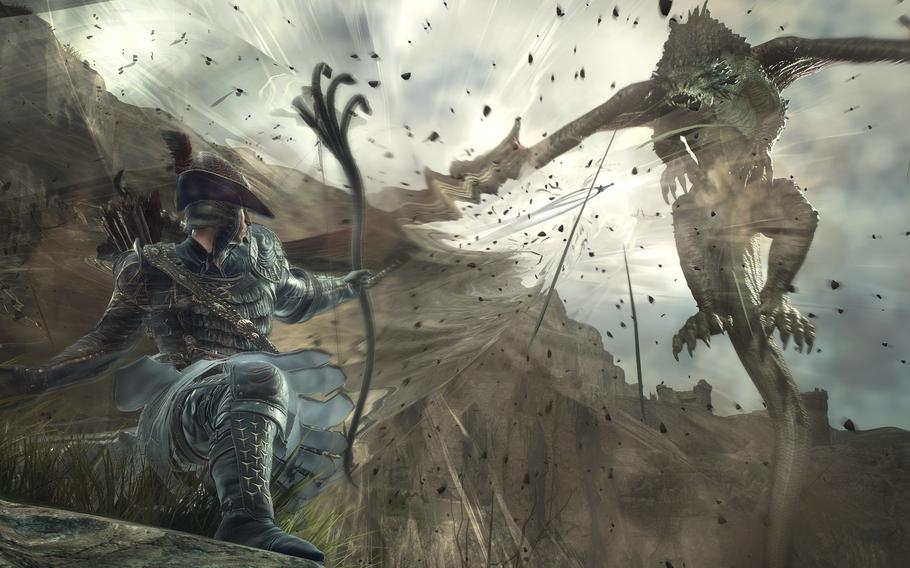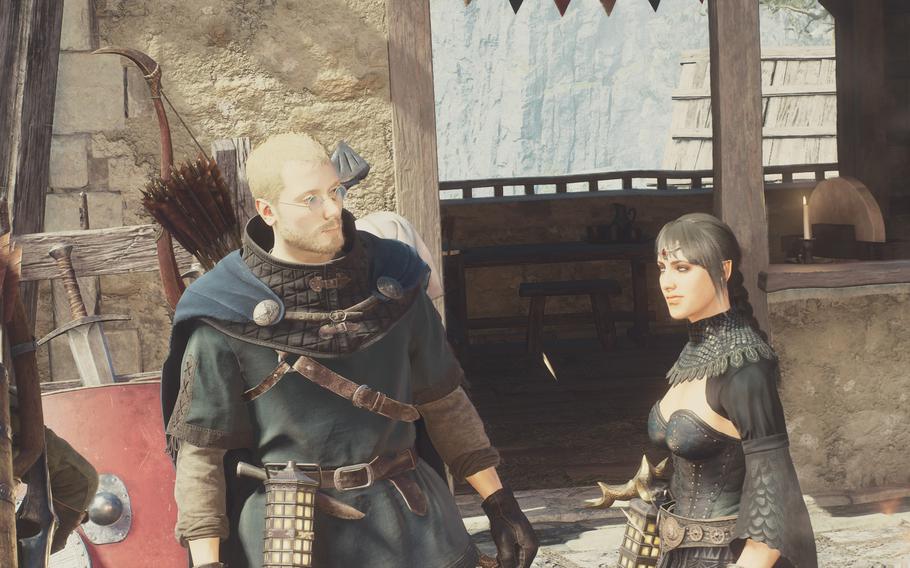
In Dragon’s Dogma II, players select a vocation for their character, the Arisen. Each vocation — fighter, mage, archer, thief and even more that become available later in the game — have their own specialized sets of weapons, armor and abilities. (Capcom)
As I plunge my flaming sword into the belly of an immense ogre, my three companions send lightning crackling through the air, fire an exploding arrow and seem to materialize from nowhere to dispense pain.
Now, this is exhilarating! This is Dragon’s Dogma II.
The fantasy roleplaying game is the long-awaited sequel to the 2012 favorite from Capcom. As in the original, you play as the Arisen, a hero whose destiny is linked to a powerful dragon. This time around, the Arisen must navigate through conspiracies in two different nations, engage in myriad minor quests and battle countless goblins, harpies, bandits, minotaurs, ogres, griffins, drakes and more.
Your first job when the game begins – or even before the game begins – is to create your Arisen. Capcom knew its incredibly detailed character creation system was popular, so they released it well before the game’s launch. By the time the game was actually available, I had spent hours creating characters – including an Arisen who looks a lot like me with a few more inches in height and fewer inches around the waist.
In creating your character, you can choose between human and Beastren – a catlike humanoid race that rules the second major nation you’ll visit. You also select a vocation: fighter, mage, archer or thief. Each vocation has its own specialized sets of weapons, armor and abilities. As you advance in levels in your selected vocation, your abilities become more diverse and powerful – and spectacular when unleashed in battle.
If you decide that you’re tired of swinging a sword and would like to wield a bow or magic staff, you can stop by your friendly neighborhood guild and change your vocation without fee or penalty. In fact, the game encourages you to switch vocations to suit your current circumstance. And as you progress through your adventure, more specialized vocations become available.
Soon after escaping imprisonment at the beginning of the game, you’ll also need to create a main pawn.

Dragon’s Dogma II offers an incredibly detailed character creation system, so it’s possible to put yourself -- or an even better-looking version -- into the game. You’ll also create an ever-present companion known as a main pawn -- this player’s main pawn is a mage that resembles Shadowheart from Baldur’s Gate 3. (Brian Bowers/Stars and Stripes)
Pawns are the most distinctive feature of Dragon’s Dogma. A pawn is a sort of interdimensional traveler who becomes your ever-present companion, fighting beside you, healing you and gathering your loot.
When creating a pawn, you have all of the same options as when creating your Arisen. It’s best to give your pawn a vocation that complements yours. Since I started as a fighter, I chose to create a mage. (She looks like a certain cleric from Baldur’s Gate 3 – a task made easy thanks to a previous builder who posted specific stats online.) And whenever you decide to change your vocation, you can change your pawn’s so you can remain a formidable team.
You can also set your pawn’s personality: straightforward, calm, kindhearted or simple. Your choice manifests itself in their dialogue and actions. You can also choose a specialty that enables them to locate materials for crafting or speak Elvish, among other things. My favorite specialty is “Chirurgeon,” which prompts them to heal my Arisen or other pawns when necessary.
During your adventures, you can – and should – hire two additional pawns to accompany you. To do this, you approach one of the many Rift Stones scattered across the land and enter the interdimensional Rift that’s populated by pawns created by other gamers. You can hire them for a mission or for the long term – or at least until they fall off a cliff and into a river.
One interesting aspect of hired pawns – and your own pawn, if he or she is hired by another gamer – is that they acquire information on the locations of quest items and treasure as they travel. Pawns are always eager to share information gained from “other worlds,” as well as other observations, which means there’s a constant stream of chatter during your travels.
Because of all this, pawns are much more interesting, lively and enjoyable in Dragon’s Dogma II.
Overall, game mechanics are basically the same as in the original, though some have been fine-tuned to make fights more exciting and other actions less tedious. For example, if you get tired of hoofing it through the forest, you can hop onto one of the new oxcarts that regularly travel between major locations.
However, one addition has been the subject of some online grumbling: Dragonsplague. This is an affliction that pawns can pick up when fighting dragons or traveling with other pawns who are infected – usually in another gamer’s world. This disease gives pawns red eyes and headaches, causes them to ignore commands and eventually spurs them to slaughter villagers.
If a pawn exhibits early symptoms, it’s easy to fire a hireling, but curing a main pawn requires a drastic measure – death. Well, it’s not actually that drastic, since pawns spring back to life and still love you. The easiest ways to “kill” pawns is to hurl them into deep water or unequip their weapons and let them die in battle.
Dragon’s Dogma II offers a richer story than the original. The main quests take you through a medieval kingdom beset by intrigue as well as hordes of evil creatures. You then head into a desert land ruled by a Beastren empress where the monsters are even bigger and badder. And the side quests add interesting characters and color to the tapestry.
While the story is nowhere near as deep – or long – as Baldur’s Gate 3, Dragon’s Dogma II’s tale is definitely more satisfying than most.
And like the original Dragon’s Dogma, the adventure doesn’t need to end after you’ve vanquished the ultimate dragon and secured your rightful place on the throne. After the final battle, you can play the game again with New Game+, which allows you to start over but with all of the experience, gold and gear you accumulated during your first playthrough.
Of the countless hours I spent playing the original game, most were in New Game+, and I’m sure I’ll do the same this time around.
Platforms: PC, Xbox Series X/S, PlayStation 5
Online: dragonsdogma.com